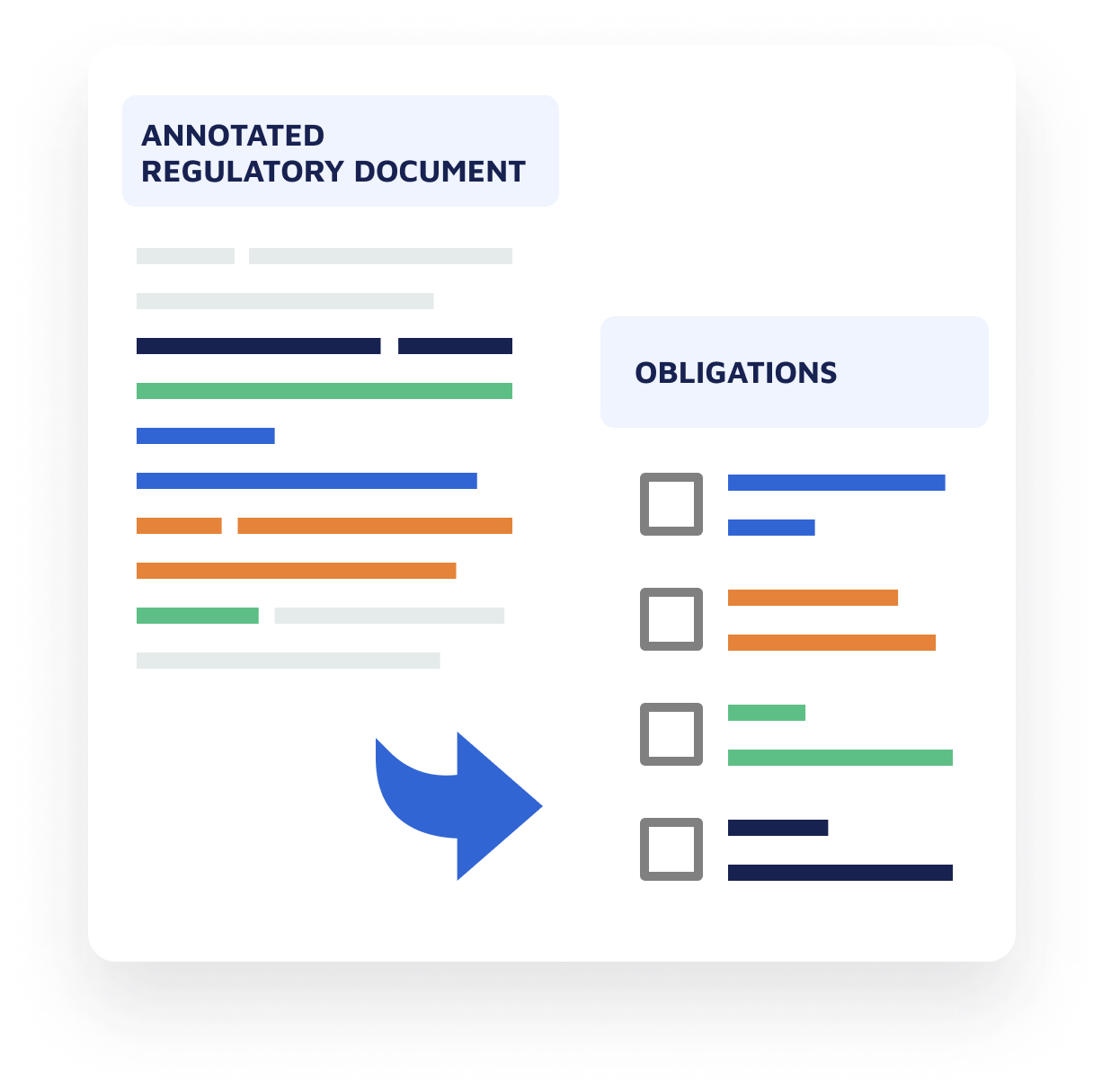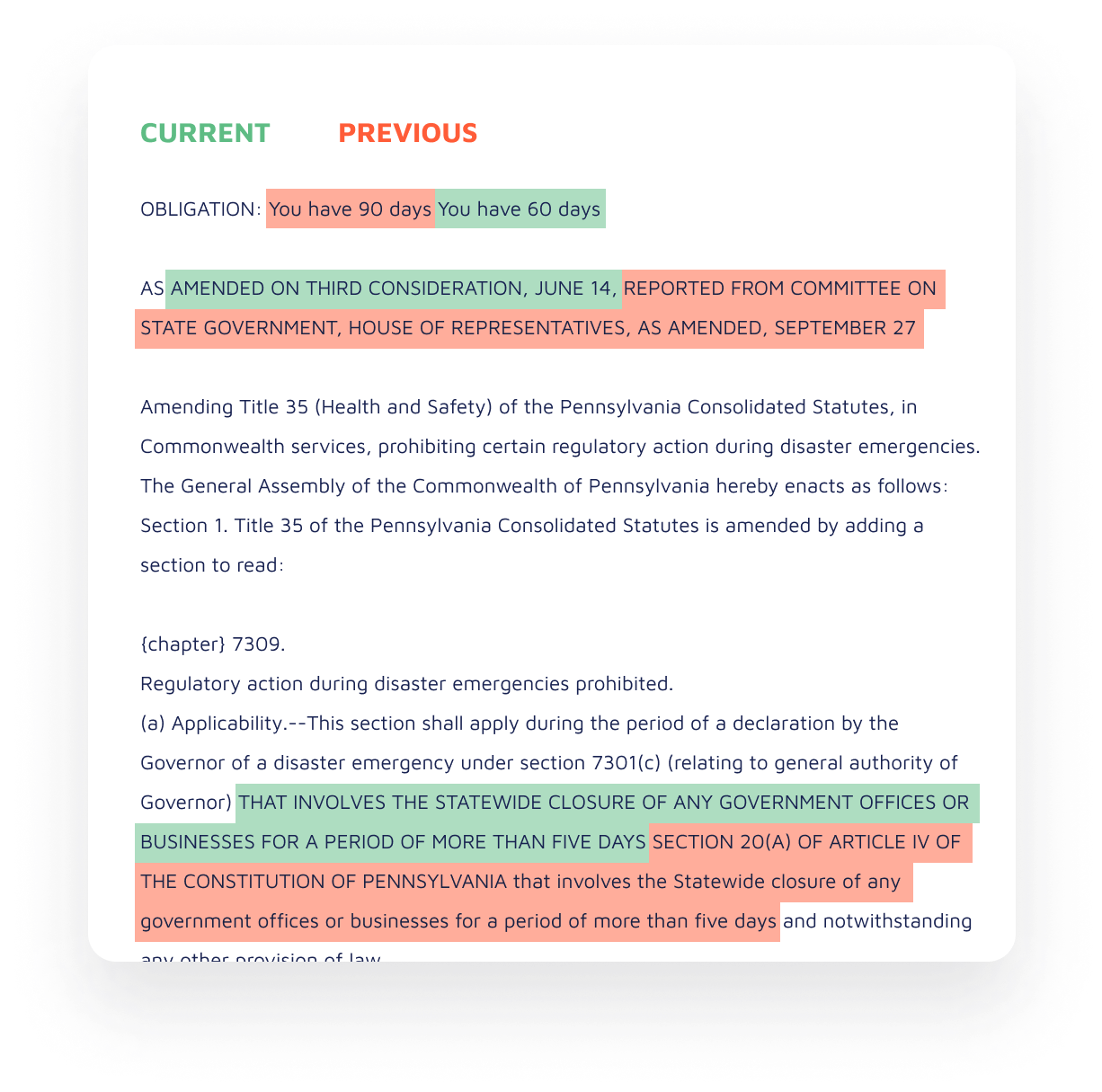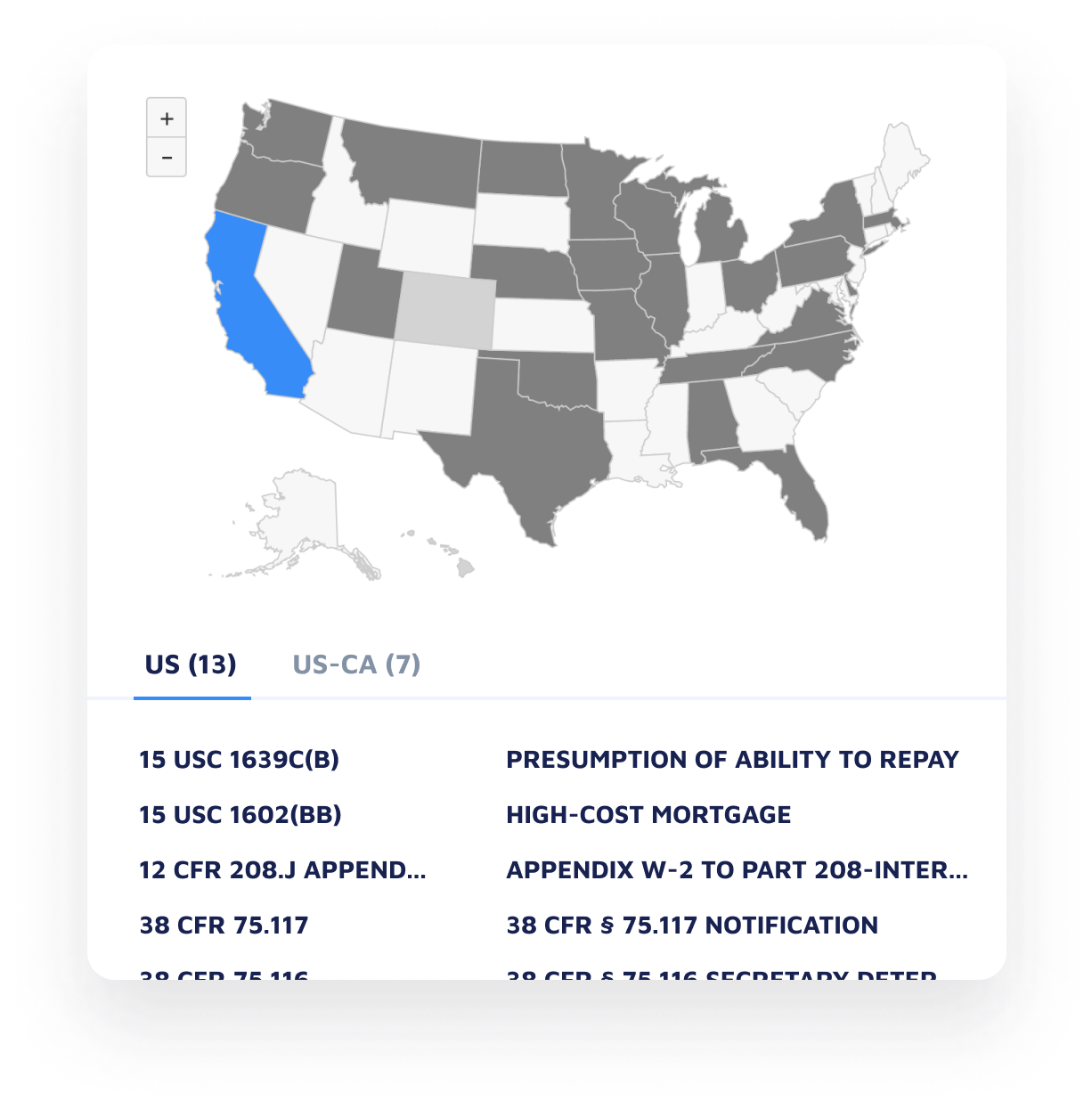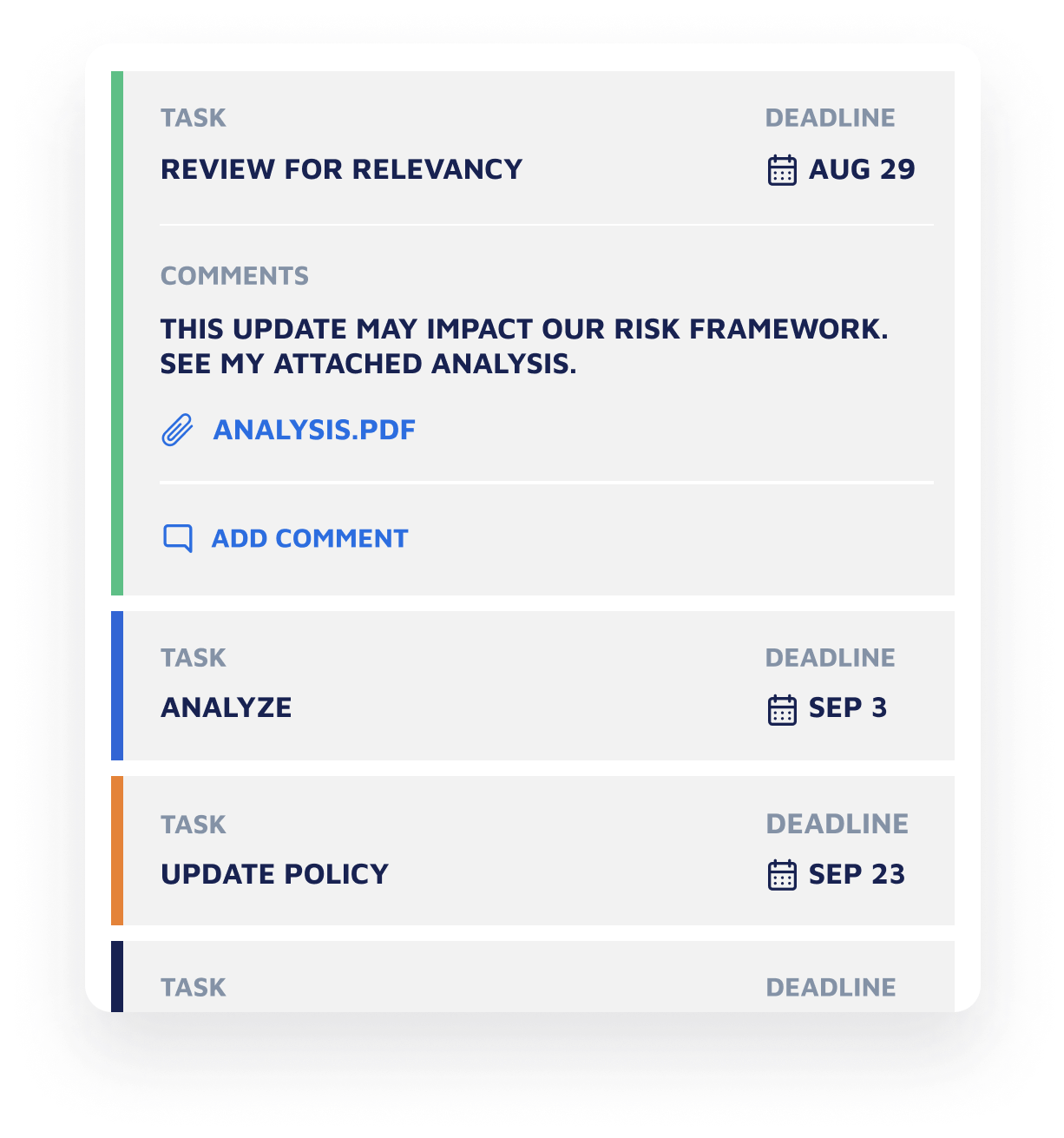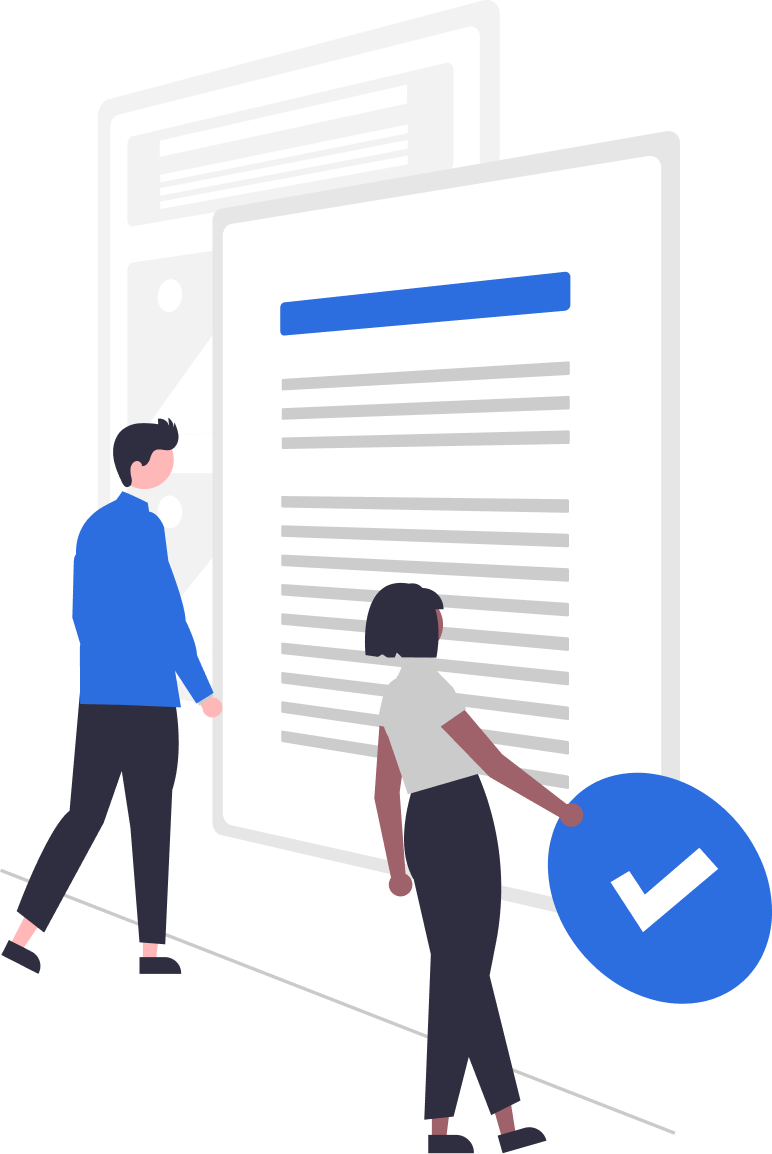Why Are Compliance Professionals So Stressed?
Do you know how much time and effort your team spends on regulatory impact analysis? Typically there are up to ten steps involved:
1 Find regulatory changes by digging through the websites and documents issued by numerous agencies in various jurisdictions, news publications, whitepapers, executive orders, supervisory guidance and enforcement actions.
2Transfer information about regulatory changes that may impact the firm into spreadsheets to determine the regulatory impact. This means that, although the compliance team has carefully reviewed multiple sources of regulatory change and guidance, they have already wasted precious time finding and managing information that may not apply to the firm’s lines of business.

3 Conduct regulatory impact analysis by assessing each line of the regulatory documents to identify obligations, rights, constraints and exceptions, and make manual annotations throughout the documents.
4
Consult experts when guidance is ambiguous or to ensure that anticipated changes align with the approaches used by others in the industry. This step can be particularly time-consuming and expensive as the compliance team member may need to find a reliable resource that the company has not previously used and specialized expertise is very costly.
5
Determine whether the regulatory change results in obligations for one or more lines of business.
6Identify the line of business individuals responsible for making the required change from the regulatory impact and assign the change task and a deadline. Often, these tasks are assigned during meetings, email messages or through other mechanisms that are not easily monitored or auditable.
7Follow up with the task owners and track the changes task to completion to ensure that the regulatory impact is addressed. This multi-step process can be particularly prone to error or omission as the required change may be complex to implement and require a long period of time to complete. During that time, there may be turnover in staff or the attention to other activities can lead to forgetting to follow up.
8Conduct a manual review to ensure that the implemented changes are operating effectively.
9Periodically report to management any exceptions or incomplete tasks.
10Collect and recheck regulatory documents, meeting notes, spreadsheets, and emails to prepare evidence of compliance for audits and exams.
That's a lot of work. Worse, some of that work is not even required.


